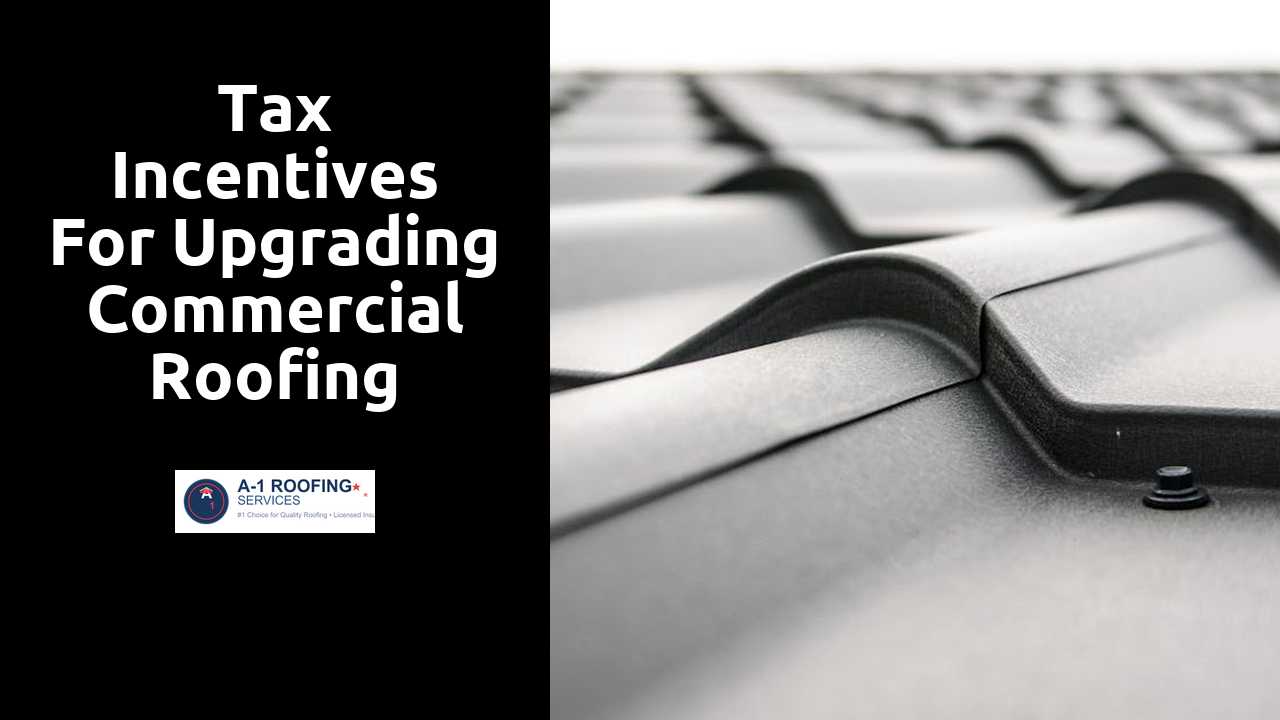
Tax Incentives for Upgrading Commercial Roofing Systems
Table Of Contents
Impact on Property Value
Upgrading commercial roofing systems can significantly enhance a property's overall worth. Potential buyers often prioritize well-maintained roofs as signs of a well-cared-for building. A newer roof not only conveys aesthetic appeal but also assures prospective tenants or owners about reduced maintenance costs and improved energy efficiency. These factors contribute to higher demand and may lead to a more favorable appraisal during the selling process.
Smart roofing upgrades can also influence the perception of an entire commercial property. Integrating modern energy-efficient materials can elevate the property's image, particularly among eco-conscious clients. In an increasingly competitive real estate market, having a state-of-the-art roofing system can serve as a unique selling point, boosting marketability and attracting a broader range of interested parties.
Have a peek at this blog for further readings.
Enhancing Building Worth
Upgrading a commercial roofing system can significantly improve a property's market value. A modern roof not only enhances aesthetic appeal but also demonstrates commitment to quality and maintenance. Buyers are often willing to pay a premium for buildings that showcase updated features, especially those that promise longevity and reduced upkeep costs.
Moreover, energy-efficient roofing systems can lead to lower utility bills, making a property more attractive to tenants. As businesses increasingly prioritize sustainability, roofs constructed with eco-friendly materials or advanced technologies can enhance desirability. This appeal can translate into higher rental rates and faster occupancy, ultimately benefiting the property owner's bottom line.
Environmental Benefits of Roof Upgrades
Upgrading commercial roofing systems contributes significantly to environmental sustainability. Enhanced roofs often utilize materials that are more energy-efficient. These materials can reduce energy consumption by improving insulation and reflecting sunlight. A cooler roof minimizes urban heat effects, promoting a healthier environment and decreasing air conditioning costs for building owners.
Additionally, many modern roofing systems incorporate eco-friendly features. Options like green roofs and cool roofs help mitigate rainwater runoff and promote biodiversity. Implementing such upgrades can lead to reduced greenhouse gas emissions and foster a more sustainable urban ecosystem. Investing in environmentally conscious roofing solutions aligns with broader efforts to combat climate change and emphasizes a commitment to responsible building practices.
Sustainability and Eco-Friendly Practices
Upgrading commercial roofing systems often aligns with the principles of sustainability, allowing businesses to reduce their environmental impact. Modern roofing materials are frequently designed to enhance energy efficiency, which can lead to lower energy consumption. This not only benefits the environment but also helps in minimizing operational costs over time. Using reflective materials can decrease the heat absorbed by the building, ultimately contributing to a reduction in the urban heat island effect.
Adopting eco-friendly practices extends beyond materials. Many roofing upgrades include the integration of green systems such as living roofs or solar panels. These innovations can improve insulation and support renewable energy generation. By investing in such technologies, businesses can promote biodiversity, enhance air quality, and contribute to overall ecological balance. This commitment to sustainability can also resonate positively with consumers, enhancing brand loyalty and marketability.
Common Roofing Upgrades Eligible for Incentives
Commercial property owners often overlook the potential benefits of upgrading roofing systems, despite several enticing incentives available. Energy-efficient options such as cool roofs and reflective coatings significantly reduce energy consumption. These systems can lead to lower utility costs while improving overall building performance. Many local and federal programs provide tax breaks or rebates for implementing such energy-saving solutions.
In addition to energy efficiency, various roofing materials are also eligible for incentives. For instance, metal roofs are highly durable and recyclable, making them an attractive option for environmentally conscious property owners. Green roofs, which support vegetation growth, not only enhance aesthetic appeal but also offer stormwater management solutions. These upgrades can contribute positively to the local ecosystem while qualifying for specific tax incentives aimed at promoting sustainable practices.
Types of Roof Systems to Consider
When evaluating options for roofing upgrades, businesses can explore various systems tailored to their specific needs. TPO (Thermoplastic Olefin) roofs are known for their energy efficiency and durability, making them a popular choice among commercial property owners. EPDM (Ethylene Propylene Diene Monomer) roofing provides excellent weather resistance and longevity. Built-up roofing (BUR) offers a layered approach that enhances protection against leaks and external elements.
Metal roofing has surged in popularity due to its strength and minimal maintenance requirements. Green roofing systems present an eco-friendly choice, allowing for the integration of vegetation, which aids in insulation and stormwater management. Each type of roofing system presents unique benefits, ensuring that property owners can find a suitable solution aligned with their goals and financial considerations.
Related Links
The Role of Roof Warranty in Commercial Roofing BenefitsImpact of Commercial Roofing on Sustainable Business Practices